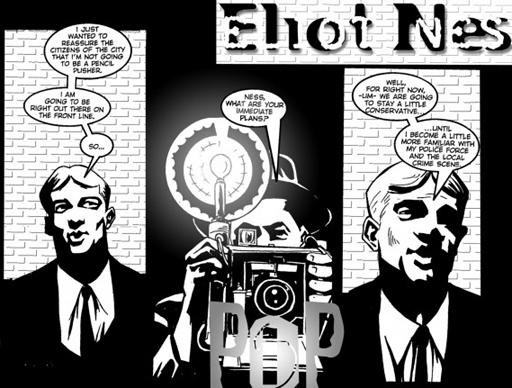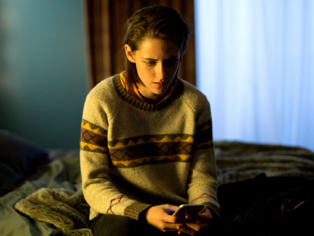WAS INTRODUCED TO HIM CIRCA 1983 BY RUTANYA ALDA & RICHARD BRIGHT
 Laurent Bouzereau, who wrote The De Palma Cut (1988) and went on to produce special feature documentaries for several Brian De Palma films (as well as for Steven Spielberg and others), is the director of the new three-part Netflix mini-series Five Came Back, which is based on Mark Harris' book about five legendary filmmakers who applied their filmmaking skills to documentaries about World War II, and how their war experiences effected the films they made upon returning to Hollywood. In the Netflix series, Steven Spielberg, Francis Ford Coppola, Guillermo del Toro, Paul Greengrass and Lawrence Kasdan discuss the directors of Harris' book: Frank Kapra, John Ford, George Stevens, William Wyler and John Huston.
Laurent Bouzereau, who wrote The De Palma Cut (1988) and went on to produce special feature documentaries for several Brian De Palma films (as well as for Steven Spielberg and others), is the director of the new three-part Netflix mini-series Five Came Back, which is based on Mark Harris' book about five legendary filmmakers who applied their filmmaking skills to documentaries about World War II, and how their war experiences effected the films they made upon returning to Hollywood. In the Netflix series, Steven Spielberg, Francis Ford Coppola, Guillermo del Toro, Paul Greengrass and Lawrence Kasdan discuss the directors of Harris' book: Frank Kapra, John Ford, George Stevens, William Wyler and John Huston.A few days ago, Independent's Chris Evans posted a profile piece on Bouzereau in which the latter explains how he came to work on docs for and about De Palma, Spielberg, Lucas, Roman Polanski, and more. Here's an excerpt:
“I remember the first time I sat in a movie theatre, I spent more time staring back at where the image was coming from than at the film itself,” Laurent says with excitement. “So my dad arranged for me to go into the projection room after it was over. I was fascinating with the projector and the circle at the top that meant you had to change reels. That started my love of looking behind the scenes.”Laurent recalls one incredible chance encounter a few years later in 1981 with his film hero. “I used to go to this small movie store in Paris every Saturday at 11am. One time, I was chatting to the owner - this creepy guy who gave me a good deal on posters – telling him how great Francois Truffaut was when in walked the famous director himself. This was a few days before The Last Metro was coming out. I was freaking out. He bought two books, one by Andre Bazin, the famous critic. I went over and talked to him. He was slight with an old fashioned tie and suit on. I was surprised as I imagined him as being tall, big and super hip. I said I was such a big fan and couldn’t wait for The Last Metro. But he responded that he was really scared because all his recent films were flops and that it would be a disaster. I was so floored that someone who I idolised had zero confidence. Interestingly, it went on to be the movie that put him back on the map.”
Not too long after this encounter, and after finishing his baccalaureate in France, Laurent decided to pack his bags and head for the US determined to get into the film world somehow. With no connections or film qualifications, little money, and only hope, his chances looked slim. His first port of call was the Big Apple.
Bizarrely his dad, who had nothing to do with the film world, had met a film producer from New York on a plane a short while before, and had told her that his son was an obsessive film fan desperate to move to the US. She had said Laurent could get in touch, probably not expecting him to do so. He did.
“Her name was Sally Faile. She had produced this pretty terrible horror film called The Returning (1983). I worked with her for a few months, which was great,” explains Laurent. But he had his sights set a little higher. Fortunately the omens were good.
At a film screening, two new actor friends, Rutanya Alda (The Deer Hunter) and her husband, Richard Bright (Looking for Mr Goodbar) introduced Laurent to Scarface director Mr Brian De Palma. Laurent found it hard to contain his excitement. He was a huge fan.
“We talked at length about his movies, and although nothing happened then, I would go on to do making of documentaries for pretty much all of his movies,” says Laurent excitedly.
However, this was the 1980s and the independent film sector was dying in New York. So after six years, Laurent decided to move to the home of Hollywood, LA. He managed to get a job working with another Hollywood great, Bette Midler for her company All Girl Productions, based in the Walt Disney Studios on Dopey Drive.
“I was a feature film development executive. It was an exciting time and she was a big star. But one of the most important things was they had a production deal with Steven Spielberg’s company Amblin Entertainment,” enthuses Laurent. This proved to be a huge turning point in Laurent’s career trajectory.
“I had written a book about De Palma by this point, and one abut Hitchcock, so I was starting to make a bit of a name for myself, which helped encourage Amblin to decide to bring me on board to do a retrospective film about Steven’s movie 1941,” he explains.
Laurent’s first encounter with the Close Encounters director was an amusing one. “He couldn’t believe I knew so much about 1941, one of his smaller and obscure films, which was not a box office success. I had a huge number of memorabilia from the film, including posters and lobby cards. That started us geeking out and we just clicked.”
This was the start of a beautiful friendship. Soon after he was asked to do a retrospective of Jaws. Laurent recalls one particularly interesting and enlightening conversation with Spielberg about the famous shark. “At the end of Jaws, the shark explodes and you have a shot of it falling to the bottom of the ocean and you hear a strange sound, like an eeeeerrrrrrr. I said to him that in his movie Duel when the truck goes over the hill at the end, it has the same sound. He said ‘Oh my god! You’re the first person to notice this. It was a dinosaur sound from an old Universal movie that I really liked, so I put it in both movies.’”
This interest in cinema language, sounds and techniques is what drives Laurent when directing his ‘making of’ movies. Whether he’s doing retrospectives of films like Jaws, The Exorcist or Lawrence of Arabia, which require lengthy research of archives, or actually being on the sets of movies and uncovering behind the scenes little gems for the DVD or Blu-Ray extras.
“I have a good relationship with all the heads of departments on the movies I work on, so I know exactly what went into creating every aspect of the films,” explains Laurent. “If it’s a big movie with large sets, I’m usually there early on to witness everything. If it’s a more modest movie or doesn’t require much pre-production, then I’ll join a little later. But the important thing is I have to be invisible. Everyone is working hard and so I don’t want to get in their way. Fortunately, Steven has pretty much the same crews for all his films, and they know and trust me, telling me ‘you should come and see this’.”





 U.K. magazine
U.K. magazine  Yesterday,
Yesterday,  "We even had a Halloween scene, with Alex running around in a Kabuki mask, terrorizing the household," noted Dearden.
"We even had a Halloween scene, with Alex running around in a Kabuki mask, terrorizing the household," noted Dearden. 

 Julia Ducournau's directorial debut, Raw, opened a couple of weekends ago. Several reviews have mentioned Brian De Palma, as well as other filmmakers, as potential influences, and specifically De Palma's Carrie and Sisters, in relation to Raw. In the first link/excerpt below, Ducournau explains to Dan at Geekadelphia why Carrie was the only consciously deliberate reference she made to any film. Following that are links to other reviews of Raw:
Julia Ducournau's directorial debut, Raw, opened a couple of weekends ago. Several reviews have mentioned Brian De Palma, as well as other filmmakers, as potential influences, and specifically De Palma's Carrie and Sisters, in relation to Raw. In the first link/excerpt below, Ducournau explains to Dan at Geekadelphia why Carrie was the only consciously deliberate reference she made to any film. Following that are links to other reviews of Raw: Hot on the heels of
Hot on the heels of 